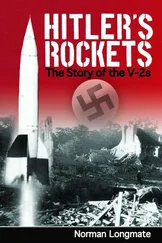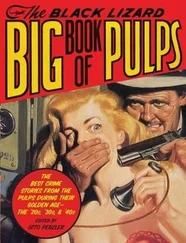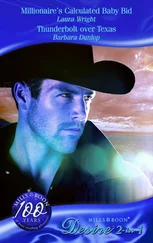Mike Mullane - Riding Rockets
Здесь есть возможность читать онлайн «Mike Mullane - Riding Rockets» весь текст электронной книги совершенно бесплатно (целиком полную версию без сокращений). В некоторых случаях можно слушать аудио, скачать через торрент в формате fb2 и присутствует краткое содержание. Жанр: Старинная литература, на английском языке. Описание произведения, (предисловие) а так же отзывы посетителей доступны на портале библиотеки ЛибКат.
- Название:Riding Rockets
- Автор:
- Жанр:
- Год:неизвестен
- ISBN:нет данных
- Рейтинг книги:3 / 5. Голосов: 2
-
Избранное:Добавить в избранное
- Отзывы:
-
Ваша оценка:
- 60
- 1
- 2
- 3
- 4
- 5
Riding Rockets: краткое содержание, описание и аннотация
Предлагаем к чтению аннотацию, описание, краткое содержание или предисловие (зависит от того, что написал сам автор книги «Riding Rockets»). Если вы не нашли необходимую информацию о книге — напишите в комментариях, мы постараемся отыскать её.
Riding Rockets — читать онлайн бесплатно полную книгу (весь текст) целиком
Ниже представлен текст книги, разбитый по страницам. Система сохранения места последней прочитанной страницы, позволяет с удобством читать онлайн бесплатно книгу «Riding Rockets», без необходимости каждый раз заново искать на чём Вы остановились. Поставьте закладку, и сможете в любой момент перейти на страницу, на которой закончили чтение.
Интервал:
Закладка:
Bob Overmyer died in his retirement while flight-testing a small plane. I was one of the CAPCOMs for his STS-51B flight. During that mission, a communication glitch allowed the crew’s private Spacelab intercom to be momentarily broadcast to the world. It included a panicked call from Bob to his lab scientists: “There’s monkey feces floating free in the cockpit!” I later teased him that he was probably the first marine in the history of the corps to ever use the word feces. He laughed at that. Bob was dead at age fifty-nine.
Astronaut-scientist Karl Henize, whom I had worked with on my very first astronaut support job—the dreaded Spacelab—died in his retirement at age sixty-six of respiratory failure while attempting to climb Mount Everest. He is buried on the side of that mountain at 22,000-foot elevation.
Besides these astronaut deaths, I noted other passings. Don Puddy, who replaced George Abbey as chief of FCOD and who approved me for my STS-36 mission, died of cancer in 2004 at age sixty-seven. Jon and Brenda McBride’s son, Richard, died in a plane crash while undergoing navy flight training. Brewster and Kathy Shaw suffered a horrific loss, too. One of their college-age sons was murdered in a random carjacking. If it is possible for a soul to audibly scream, mine did at that news. No death, not even the ones sustained in the Challenger and Columbia tragedies, affected me as much. Every parent understands.
Gene Ross, the ever-present and ever-amicable owner of the Outpost Tavern, died in 1995. He didn’t live to see his bar immortalized on the silver screen. Disney would use it as a backdrop for a scene in the 1997 movie RocketMan and a portion of the movie Space Cowboys would be filmed inside the cluttered, smoky cave.
Under its new management, the Outpost has seen a few minor changes. The shell-covered parking lot has been leveled. Gone are its bunker-buster craters. And a small red neon light proclaiming “The Outpost Tavern” now decorates a side of the building. But for that, the structure still appears abandoned and ready for demolition. The only improvement to the interior has been the addition of modern bathrooms. The old toilets—one-hole closets with tilting floors and rusted porcelain fixtures—had been intimidating enough to prompt Donna to once comment, “I would rather pee in the outside bushes than sit on an Outpost toilet seat.” The interior of the bar remains a time capsule from the halcyon days of the TFNGs: Photos and posters of smiling astronauts and mission crews still cover the walls and ceiling. My NASA genesis photo is still there. In a display of Texas pride, Gene Ross put up the photos of all the Texas-born astronauts in the entryway next to the bikini-girl-silhouette saloon doors. Epochs of cigarette smoke and grease have put a yellow film over those photos but I’m still visible as the thin, dark-haired, thirty-two-year-old astronaut candidate I was in 1978. Whenever a trip takes me to Houston, I always make it a point to visit the Outpost. I will sit at the bar, order a beer, and listen to the TFNG ghosts whisper the stories of joy and heartbreak that have been written there.
John Young retired from NASA on December 31, 2004, after a forty-two-year career that included six space missions covering the Gemini, Apollo, and shuttle programs. He twice flew to the moon, landing on it on Apollo 16. In a NASA press release John was praised as an “astronaut without equal.” You will never hear me say otherwise.
George Abbey was appointed director of the Johnson Space Center by NASA Administrator Daniel Goldin on January 23, 1996 (no doubt putting the fear of God in those who had celebrated, too enthusiastically, his JSC departure in 1987). Five years later he was “reassigned” by Goldin from that position to NASA HQ to serve as Goldin’s senior assistant for international issues. The press noted that the announcement of Abbey’s JSC termination came after close of business on a Friday and with little description of the responsibilities of his new title, signatures that the change was actually a firing. Some speculated that cost overruns on the ISS program had prompted Goldin to remove George. He retired from NASA on January 3, 2003, after a nearly forty-year career with the agency.
I was last face-to-face with John and George in 1998 at the twentieth anniversary of the TFNG class. We traded empty hellos and then separated. I was no longer their hostage and would not pretend friendship.
As an outsider I watched the shuttle program fully recover from Challenger. Though the STS never recaptured its Golden Age, it did achieve an average of seven missions per year throughout most of the 1990s. Among its more significant post- Challenger missions were the launch of Hubble Space Telescope, nine missions to the Russian Mir space station, and multiple missions in support of the assembly and resupply of the International Space Station. The latter was being constructed in partnership with the Russians. The godless commies had become our friends. Even Bill Shepherd, who had penned the Suck on this, you commie dogs inscription on a photo of our STS-27 payload, would morph into Comrade Shepherd and fly a five-month ISS mission with two Ruskies.
The shuttle continued to experience near misses with disaster, providing more evidence that it would never be truly operational. One of the closest calls occurred on STS-93. During the early part of ascent a small repair pin in the combustion chamber of one SSME came loose and impacted the inside of the engine nozzle, puncturing its cooling jacket. Just as a hole in the radiator of an automobile will cause a leak of engine coolant, Columbia’s nozzle damage was doing the same thing. As she roared upward, she was bleeding coolant. But in Columbia’s case the coolant was also the engine fuel. The shuttle’s liquid hydrogen plumbing system circulates that supercold fluid around the engine nozzles before the hydrogen is burned. Columbia was headed into orbit in danger of running out of gas. Fortunately the damage and the resulting leak were small. The propellant loss resulted in an early engine shutdown, but Columbia still achieved a safe orbit only seven miles lower than planned.
The nozzle damage turned out to be just one of the near misses for the STS-93 crew. Five seconds into flight an electrical system short circuit resulted in the failure of several black boxes controlling two of the SSMEs. Backup engine controllers, powered by a different electrical system, took over the control of those engines and there was no impact to their performance. But for eight and a half minutes, two of Columbia’s engines were just one failure away from shutting down and forcing the crew into an ascent abort. The source of the short circuit was later isolated to an exposed wire.
Another shuttle near miss occurred on STS-112 when a circuit failure resulted in only one set of the hold-down bolt initiators firing at liftoff. In the launch sequence the hold-down bolts are exploded apart just milliseconds prior to SRB ignition so the rocket is completely free of the ground when the boosters ignite. Had the redundant initiators in the hold-down bolts not fired, Atlantis would have been still anchored to the pad at SRB ignition. The machine would have destroyed herself trying to rip free of the bolts.
STS-93 and STS-112 were saved by system redundancy, but there was another recurring problem on shuttle launches for which there was no redundancy to provide protection. Insulation foam was shedding from the gas tank and striking the orbiter. The phenomenon was first noted on STS-1 and was subsequently documented by photo imagery on sixty-four other shuttle missions. Hank Hartsfield and Mike Coats had observed it on our Zoo Crew flight in 1984. This foam-shedding anomaly was a violation of a design requirement, just as the pre- Challenger SRB O-ring erosion had been a design violation. Nothing was supposed to hit our glass rocket, not even something as seemingly innocuous as the foam from the ET. But as hit shuttles kept returning to the Earth safely, engineers became ever more comfortable with accepting the design violation as nothing more than a maintenance issue—the foam strikes were requiring a handful of damaged tiles to be replaced between missions. The “normalization of deviance” phenomenon that had doomed Challenger in 1986 had returned to infect NASA and blind management to the seriousness of the foam loss problem. On January 16, 2003, eighty-two seconds into the flight of Columbia, a briefcase-size piece of foam, weighing approximately one and a half pounds, shed from the ET and struck the Achilles’ heel of the shuttle heat shield, one of the wing leading-edge carbon panels. The impact blasted a hole of indeterminate size in that carbon. The damage had no effect on ascent and Columbia safely reached orbit. The site of the impact was not visible from the cockpit windows and the crew remained oblivious to the fact that their shuttle was mortally wounded. It could not survive reentry.
Читать дальшеИнтервал:
Закладка:
Похожие книги на «Riding Rockets»
Представляем Вашему вниманию похожие книги на «Riding Rockets» списком для выбора. Мы отобрали схожую по названию и смыслу литературу в надежде предоставить читателям больше вариантов отыскать новые, интересные, ещё непрочитанные произведения.
Обсуждение, отзывы о книге «Riding Rockets» и просто собственные мнения читателей. Оставьте ваши комментарии, напишите, что Вы думаете о произведении, его смысле или главных героях. Укажите что конкретно понравилось, а что нет, и почему Вы так считаете.












